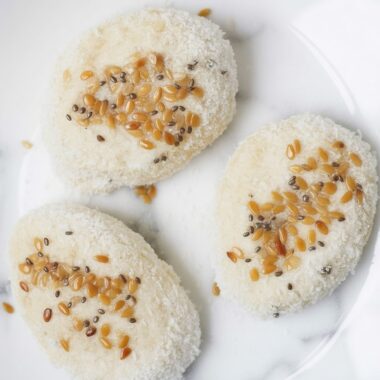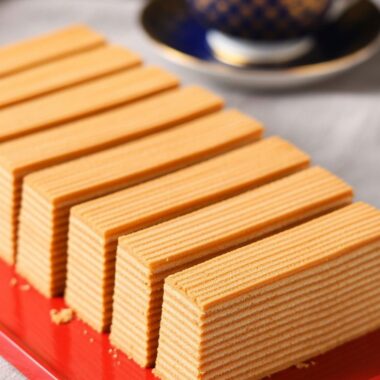Palitaw has always been one of those snacks that reminds me of long afternoons at home. As kids, my cousins and I would sit around my grandmother’s kitchen table, our hands dusted with rice flour, giggling as we shaped the sticky dough into little ovals. The thrill was watching them float to the top of the pot — it felt like a magic trick every single time.
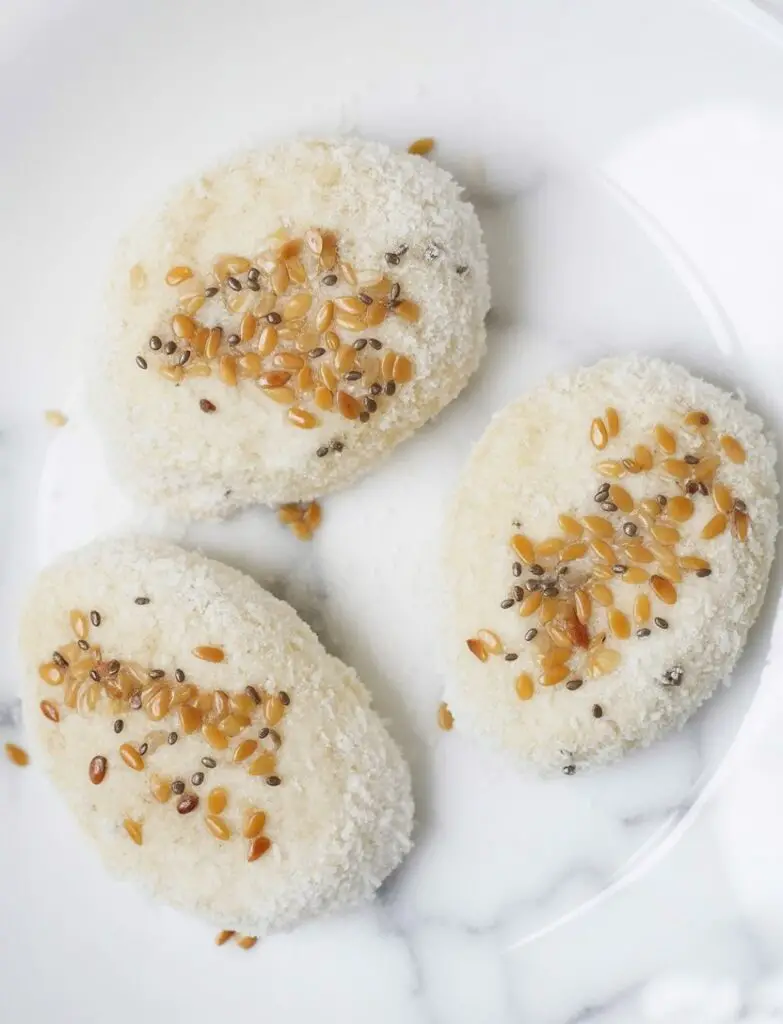
The name itself comes from the Tagalog word “litaw,” meaning “to appear.” True enough, the rice cakes rise to the surface once they’re cooked. And beyond the fun, there’s something deeply comforting about these chewy little cakes coated in coconut, kissed with sugar, and sprinkled with toasted sesame seeds. They taste like family gatherings, lazy Sundays, and childhood all rolled into one bite.
Why This Recipe Works
There are so many reasons I come back to this recipe:
- Quick and fuss-free. You only need glutinous rice flour and water for the dough — no grinding rice the old-fashioned way. I can have a batch ready in under 30 minutes, which is perfect when I’m craving a taste of home but don’t have hours to spare.
- Great for making ahead. Palitaw can be prepared in advance and stored well. I often make them on a Friday night, so they’re ready to share at a weekend get-together.
- Endless ways to play around. Some days I coat mine with grated cheese instead of coconut, other times I mix a bit of ube extract into the dough for that purple hue and earthy sweetness. Pandan-flavored palitaw is another favorite — it fills the kitchen with the most wonderful aroma.
It’s the kind of recipe that’s forgiving and fun, which makes it ideal whether you’re new to Filipino desserts or grew up eating them.
Ingredients and What I Use
You don’t need anything fancy here:
- Glutinous rice flour (sweet rice flour): This is the backbone of palitaw. I keep a pack in my pantry because it’s handy for other Filipino snacks too.
- Water: Just enough to bring the flour together into a soft, pliable dough.
- Unsweetened coconut: Desiccated, shredded, or medium — I’ve tried them all. Desiccated coconut keeps best, but if you find freshly grated coconut, that gives the most fragrance.
- Sugar and toasted sesame seeds: The classic topping. I always toast my sesame seeds in a dry pan until they’re golden and nutty. That aroma is the real deal.
A melon baller or cookie scoop is nice to keep the dough portions even, but clean hands work just fine.
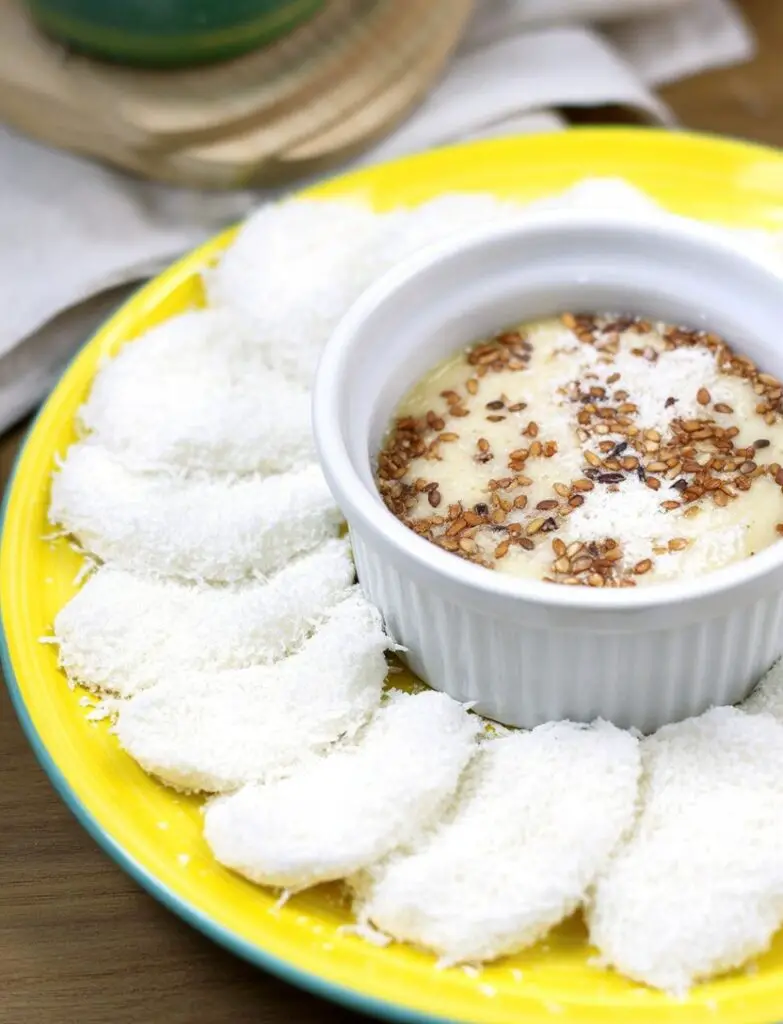
Step-by-Step: How I Make Palitaw
- Make the topping: Mix granulated sugar with toasted sesame seeds and set aside. This mixture will be the finishing touch.
- Form the dough: Combine rice flour and water until it forms a smooth, soft dough. It should feel a bit sticky but still easy to handle.
- Shape the cakes: Roll dough into small balls, then flatten into ovals about ¼ inch thick. I like to lay them on parchment so they don’t stick to the counter.
- Cook in boiling water: Drop the ovals gently into a pot of boiling water. Once they float to the top, they’re done — usually in just a minute or two.
- Drain well: Place them on parchment paper or a lightly oiled tray to prevent sticking.
- Coat with coconut: While still warm, roll each rice cake generously in coconut.
- Serve with sugar-sesame topping: Sprinkle right before serving so the sugar doesn’t melt into the coconut.
Tips From My Kitchen
- Texture check: If your dough looks crumbly like feta cheese, add a splash more water and knead until smooth. If it feels stiff, you’ve added too much — just work in a little extra flour.
- Batch cooking: I never cook too many at once, or they’ll stick together. Think of it like cooking dumplings — a few at a time is the way to go.
- Don’t overcook: As soon as they float, scoop them out. Leaving them too long makes them tough.
- Sugar timing: Only add the sugar-sesame topping right before serving. If you do it earlier, the sugar will melt into the coconut and turn the coating soggy.
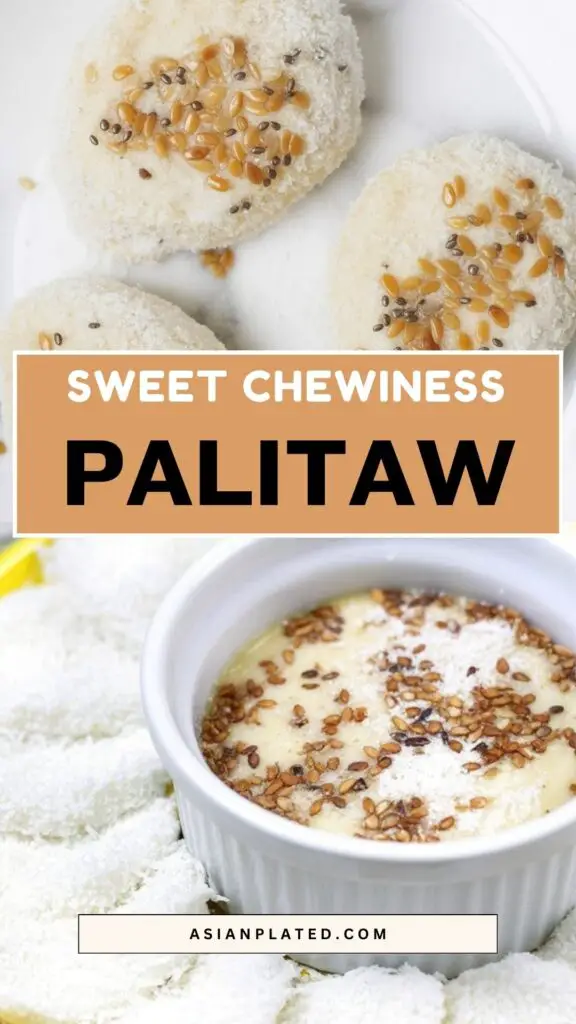
Make Ahead and Storage
I often make palitaw in the evening and keep them ready for the next day. Here’s what works for me:
- Store coated palitaw in an airtight container in the fridge for up to two days.
- To refresh, I sometimes warm them for a few seconds in the microwave before sprinkling the sugar topping.
- If you want them to last longer, skip the sugar-sesame step until serving.
They’re best eaten fresh, but I’ve found that the desiccated coconut version holds up nicely.
How I Like to Serve Palitaw
Palitaw shines as an afternoon snack with coffee or tea. I’ve served them alongside savory pancit at birthday parties, and they disappear faster than the noodles. Around Christmas, my family loves making a platter of Filipino sweets — palitaw, puto, suman, and of course, bibingka. It’s such a comforting mix of flavors that instantly feels festive.
Sometimes, when I’m feeling playful, I make mini palitaw bites and roll them in different coatings — classic coconut, cheese, even crushed peanuts. They’re always a hit at potlucks.
FAQs
Can I use regular rice flour?
No, it won’t work the same way. You need glutinous rice flour for that chewy texture.
Can I freeze palitaw?
I don’t recommend it. Freezing changes the texture and makes them gummy.
Can I use sweetened coconut?
You can, but I prefer unsweetened. The sugar topping already brings enough sweetness.
Palitaw
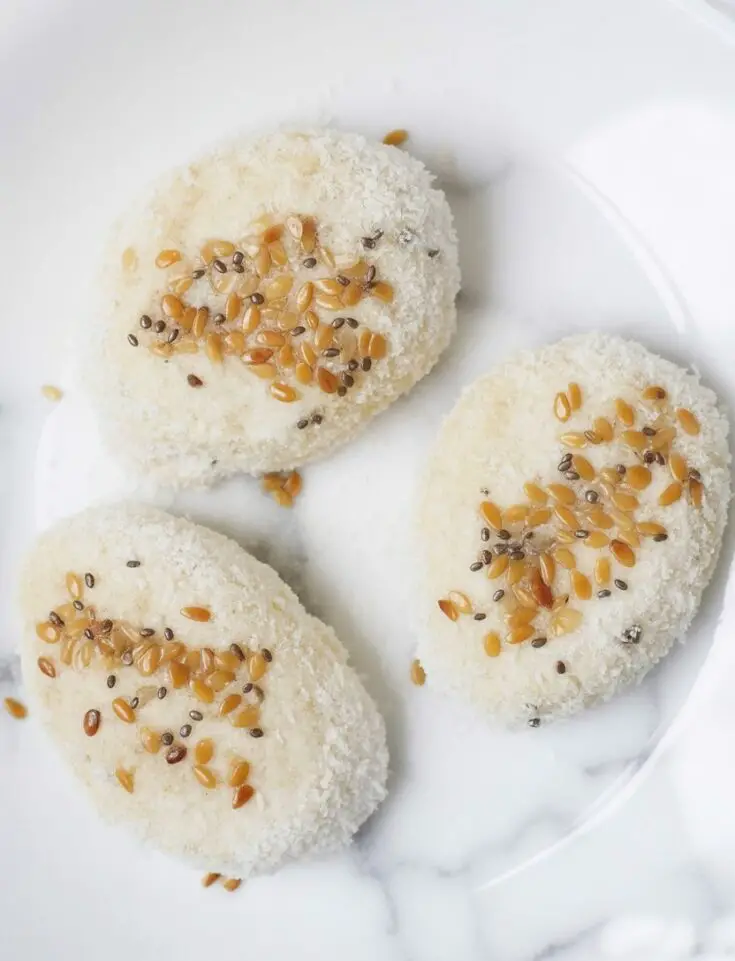
A little foodie note: Palitaw is a well-loved Filipino treat that’s chewy, lightly sweet, and coated in coconut. Each bite is finished with a sprinkle of sugar and toasted sesame seeds, making it simple yet irresistibly delicious. It’s the kind of snack that instantly brings back childhood memories.
Ingredients
- 1 ½ cups glutinous rice flour
- ¾ cup water
- 1 cup unsweetened shredded coconut (fresh, medium, or desiccated)
- ½ cup granulated sugar
- ¼ cup sesame seeds, toasted
Instructions
- In a small bowl, stir together the sugar and toasted sesame seeds. Set aside for later.
- Place the glutinous rice flour in a mixing bowl and slowly add water, kneading until the mixture forms a soft, pliable dough. Adjust with a little extra flour if it feels sticky.
- Scoop small portions of dough, roll them into balls, and flatten into oval discs about ¼ inch thick.
- Bring a pot of water to a boil. Drop in a few pieces of dough at a time, making sure not to overcrowd. Cook until each palitaw floats to the surface, which means it’s ready.
- Lift them out gently with a slotted spoon and transfer onto parchment paper, spacing them apart so they don’t stick.
- While still warm, roll each piece in shredded coconut until fully coated.
- When serving, sprinkle the tops generously with the sugar–sesame seed mixture. Enjoy warm or at room temperature.
Nutrition Information:
Yield: 30 Serving Size: 1Amount Per Serving: Calories: 61Total Fat: 2gSaturated Fat: 2gTrans Fat: 0gUnsaturated Fat: 1gCholesterol: 0mgSodium: 2mgCarbohydrates: 9gFiber: 1gSugar: 4gProtein: 1g
Asianplated.com, occasionally offers nutritional information for recipes contained on this site. This information is provided as a courtesy and is an estimate only. This information comes from online calculators. Although allchickenrecipes.com attempts to provide accurate nutritional information, these figures are only estimates.
A Final Thought
Palitaw may be one of the simplest Filipino desserts to make, but it carries so much heart. For me, every batch is a reminder of home — of grandma’s kitchen, of laughter with cousins, of the joy in something as small as watching rice cakes rise to the surface of boiling water.
If you’ve never tried making Filipino kakanin before, start with palitaw. It’s easy, it’s nostalgic, and it just might become a tradition in your own home too.
Try other Filipino recipes:





